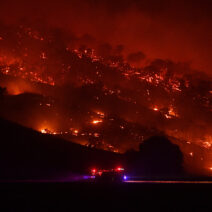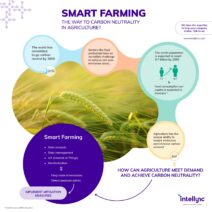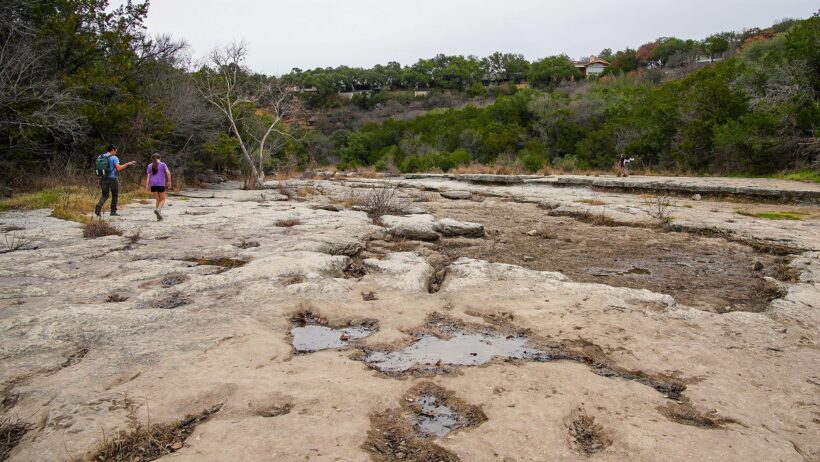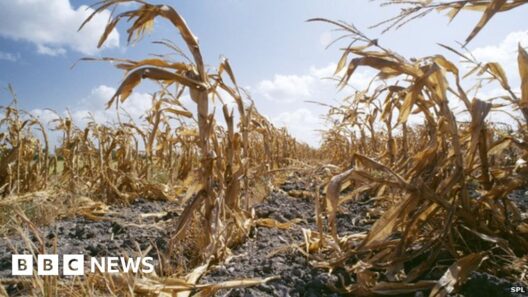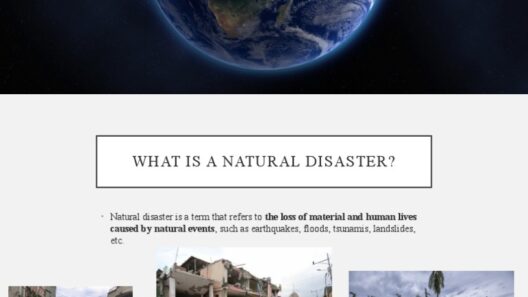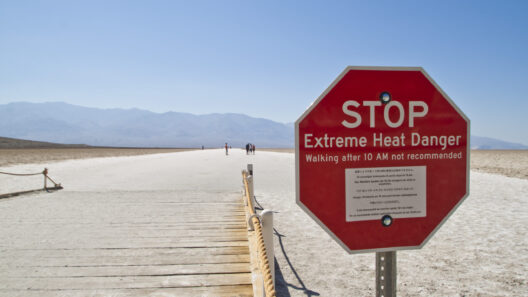In the intricate tapestry of our planet’s climate, droughts, floods, and wildfires emerge as threads woven from the loom of global warming. Each phenomenon is a reflection of climatic conditions, yet they intersect at critical junctures, leading to catastrophic consequences. This interplay can be likened to a tempestuous symphony where changing notes of temperature and precipitation compose a dissonant score, profoundly affecting ecosystems, agriculture, and human societies.
To understand the correlations between droughts, floods, and fires, one must first appreciate how global warming acts as a pervasive catalyst. Primarily, the greenhouse gases emitted by human activities, such as carbon dioxide and methane, create an invisible barrier in the Earth’s atmosphere. This barrier traps heat, leading to an alchemical transformation of global temperatures. As the world becomes increasingly warm, the hydrological cycle—the natural movement of water—also undergoes alteration. Warmer air holds more moisture, which paradoxically can lead to both excessive rainfall in some regions and exacerbated drought conditions in others.
Consider droughts, which are often perceived as the harbingers of aridity—a slow and sometimes imperceptible desiccation of the land. As global temperatures rise, intensive evaporation occurs, resulting in soil desiccation and reduced water availability. Crop yields plummet, and ecosystems begin to fray at the edges. The impact is both immediate and insidious. Wildlife faces habitat loss, and communities dependent on agriculture grapple with food insecurity. The scars of droughts are deep, carving out despair amidst the vast expanse of parched earth.
Now, pivot to floods, nature’s counterbalance to this dehydration. In regions where precipitation becomes erratic and intense, the consequences can be ruinous. Climate change intensifies storms, leading to torrential downpours that overwhelm drainage systems. Riverbanks swell; floodwaters engulf habitats and urban areas alike. Much like a tumultuous sea breaching its shores, floods do not merely disrupt the physical realm but also unleash psychological and socio-economic turmoil. They uproot individuals from their homes and choke the very lifeblood of communities.
Indeed, the transition from drought to flood can seem like a cruel joke played by nature—a switch in the weather’s fickle temperament that leaves an indelible mark. The cyclical pattern of such extremes can create a turbulent environment where the soil, stripped of moisture during drought, becomes incapable of absorbing excessive rainfall. This leads to unprecedented runoff, further exacerbating the flooding issues. In this intricate dance between moisture scarcity and excess, one cannot help but recognize the broader implications of climate change as the puppeteer.
Fires, often viewed as destructive forces, are also deeply linked to the ever-warming climate. Wildfires, while natural phenomena under regular circumstances, have transformed into raging infernos due to prolonged droughts and rising temperatures. When vegetation becomes parched and dry, it acts like tinder, ready to ignite at the slightest spark. The frequency and intensity of wildfires have been on a meteoric rise, extending beyond traditional fire seasons into year-round threats. Our forests, the lungs of the Earth, become battlegrounds, releasing carbon stored for centuries and further contributing to the very climate warming that fueled their destruction.
The concept of “fire weather” is gaining prominence in discussions surrounding climate change. This term describes conditions, such as low humidity and high temperatures, that create ripe circumstances for fire outbreaks. Climate models predict an alarming trend in which regions that traditionally experienced moderate fire risk may soon enter a new era of vulnerability, thus altering landscapes and ecosystems irreversibly. In this context, fires play a dual role: they embody destruction and simultaneously reset ecosystems, albeit painfully and at a cost that can take generations to recover from.
The interconnections between droughts, floods, and fires serve as a stark reminder of a broader truth: climate change does not operate in silos. Rather, it orchestrates a complex relationship where one element exacerbates another. The hydrological cycle presents a particularly vivid illustration of this, demonstrating how climate extremes can magnify one another’s effects. The consequences ripple through the web of life, impacting not just nature but humanity itself.
Furthermore, the socio-political dimensions of these climate phenomena cannot be overlooked. Marginalized and vulnerable communities often bear the brunt of climate-induced disasters. Inequities in resources and infrastructure exacerbate their susceptibility to adverse effects, yielding a climate justice crisis that demands urgent attention. Addressing the root causes of climate change and its manifestations—droughts, floods, and fires—is not merely an environmental imperative; it is also an ethical obligation.
As the planet continues to warm, a synergetic relationship amongst these environmental phenomena will become increasingly salient. This underscores the urgent need for comprehensive climate action—strategies that not only mitigate the effects of climate change but also empower communities to adapt to the ever-evolving landscapes of drought, floods, and fires. Sustainable practices, innovative technology, and policy reforms can forge pathways towards resilience, enabling societies to weather the storms of climate extremes.
The question, then, is not simply whether droughts, floods, and fires are caused by global warming. Rather, it is in acknowledging the profound interconnectedness of these events and advocating for a holistic response to avert catastrophic outcomes. The climate crisis is a clarion call—a chance to rethink our relationship with nature and safeguard the multifaceted ecosystems upon which we rely for survival. Through understanding and action, we can hope to weave a more resilient and harmonious world, steering clear of the impending tempest that global warming threatens to unleash.

